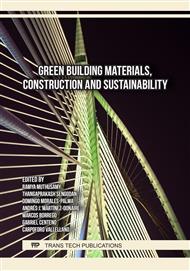p.95
p.107
p.113
p.135
p.143
p.151
p.161
p.171
p.181
Implementation of Bacterial Cellulose in Production Plants for Waste Disposal
Abstract:
Waste management is a globally relevant issue of absolute importance. Awareness of the reuse and use of waste, as well as the implementation of methodologies that promote these ideologies, are vital to solving this problem to a large extent. By merging this project with the issue of waste management, specifically the handling of single-use plastics, the authors focus on researching and developing a material that replaces plastic in product packaging, seeking to take advantage of the waste generated in cassava agriculture and promoting the concept of circular economy. Bacterial cellulose is analyzed, considering it a natural and renewable material capable of replacing polypropylene in single-use packaging. A biocellulose manufacturing plant from cassava is proposed. To do this, the research begins with an analysis of the properties of this product, its production methods, the conditions and factors that influence its growth, and its possible applications. The design of a productive pilot plant of bacterial cellulose is studied, with the necessary machinery, elements, sizing, and raw materials required for the described production volumes. Finally, a simulation of the production lines is carried out using the software program Anylogic Simulation, to obtain validation of the proposed plant. Throughout the work, the relationship with the Sustainable Development Goals, the reduction of CO2 emissions, and the replacement of single-use plastics are considered.
Info:
Periodical:
Pages:
181-190
Citation:
Online since:
October 2023
Authors:
Keywords:
Price:
Сopyright:
© 2023 Trans Tech Publications Ltd. All Rights Reserved
Share:
Citation:



